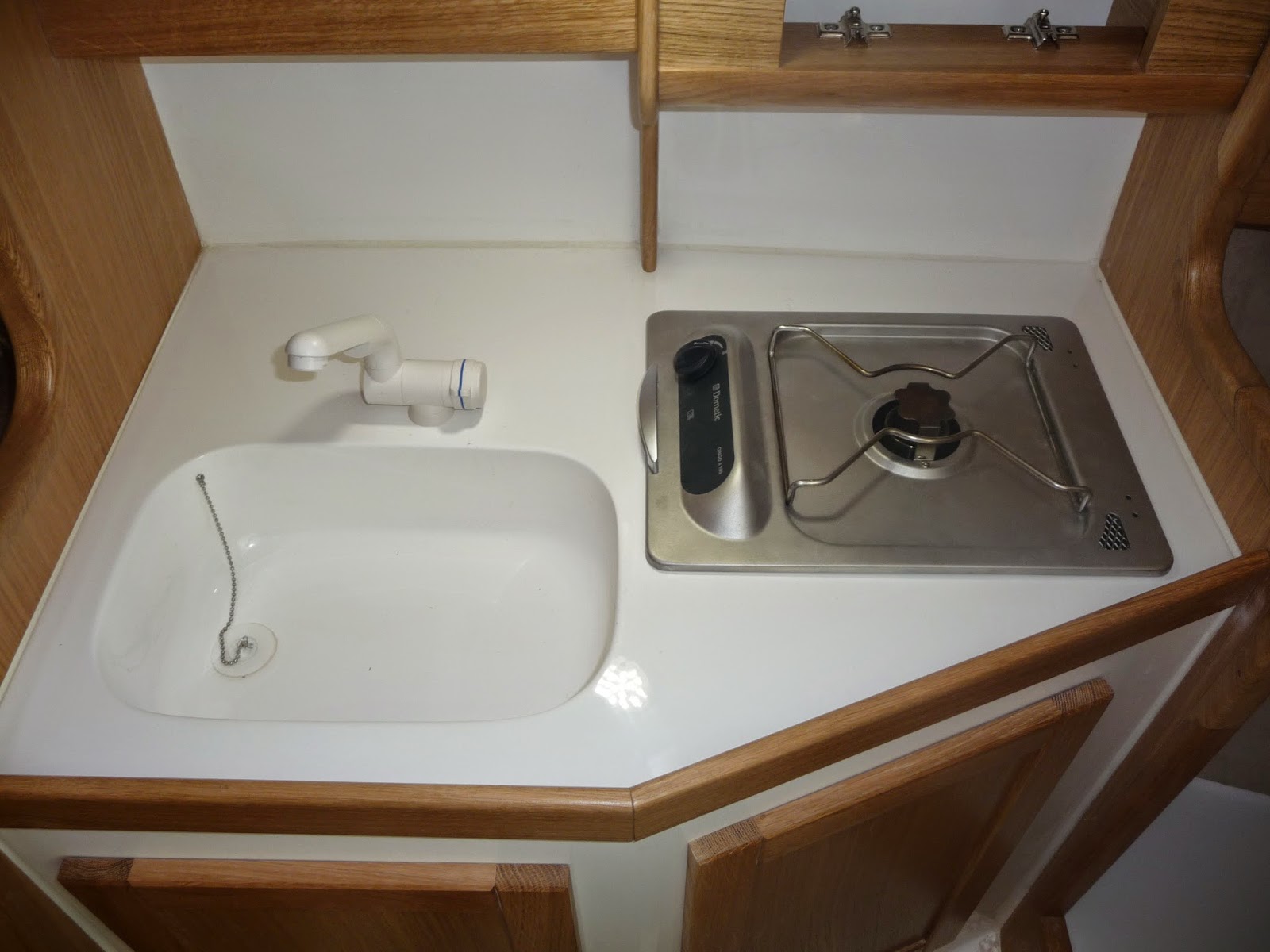The stock boat has the preparation for the battery in the middle cockpit locker. The starboard locker has separate space for a flexible water tank and the port locker is completely empty without any preparation.
Since we don't have a flexible water tank, I decided to enhance the balance of the weight in the cockpit. That means to relocate the heavy 24kg 90Ah battery to the starboard locker and install the 23L fuel tank into the port locker.
This relocation result in a completely free middle locker which can be used for bulky items like fenders, spare anchor and so on.
The problem is that I have to build shelves for this item.
This is a shelf for the battery in the starboard locker made from the marine 10mm plywood:
 |
| battery shelf - 10mm plywood |
 |
| additional support for the battery shelf |
 |
| shelf in place |
I don't have more photos from laminating, so I can only say that I've sanded the gelcoat a bit and then laminated with epoxy and two layers of glass cloth. Then I've painted it with one coat of white gelcoat. I'm now waiting for gelcoat wax (5% paraffin solution in styrene) that will be added into gelcoat and paint the last non-tacky top-coat layer.
 |
| one coat of gelcoat of battery shelf |
The port side locker
is made the similar way with dimensions for this vertical gas tank
 |
| 23L gas tank |
 |
| gas tank shelf in the port locker |
Then I'm going to attach the holding straps and finalize the electrical wiring - battery shunt, solar and shore power charger.
In the mean time, I've installed some new wires from the 12V switch panel back to the battery for the solar charging and for the battery monitor.
So stay tuned for more soon, hopefully.






















